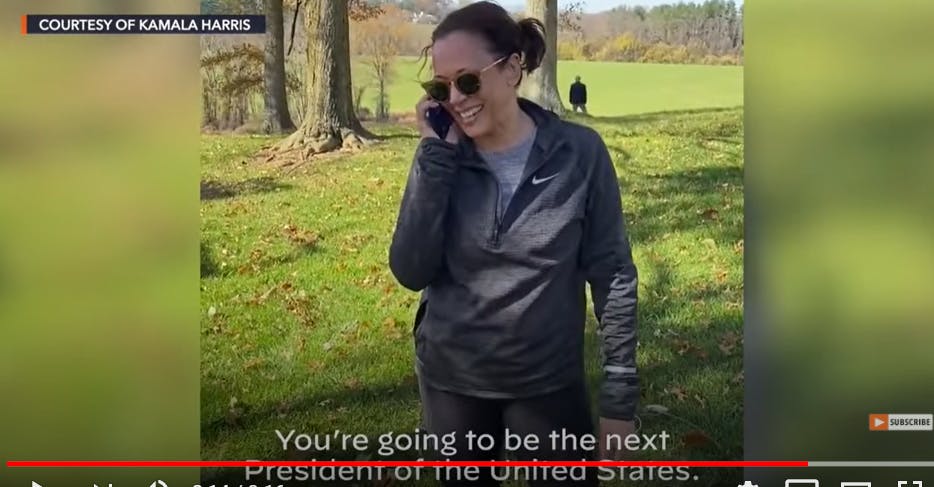 The last thing I’d want is to reduce the historical importance of the US elections to a footnote in the history of Nike, but the video clip of Kamala Harris wearing a Nike tracksuit top – sharing the moment of victory with Joe Biden on her mobile – was also one of those ‘Whoa!’ moments for students of sports brands.
The last thing I’d want is to reduce the historical importance of the US elections to a footnote in the history of Nike, but the video clip of Kamala Harris wearing a Nike tracksuit top – sharing the moment of victory with Joe Biden on her mobile – was also one of those ‘Whoa!’ moments for students of sports brands.
It’s almost, but not quite, like Nike had been magically present when the first man set foot on the moon, or when the Berlin Wall came down. Or when UCLA attempted to transmit the first word over the internet, it was ‘Nike’ they typed in, not ‘Login’.
My first reaction when seeing the clip was to ask in wonder ‘How?’ How did Nike have the karmic power or just plain dumb luck to be present at that exact moment – a moment of joy for many people that was replicated on the streets and in the homes of millions in America, as well as internationally.
After some reflection, I concluded it wasn’t dumb luck, Nike made their own luck.
Harris was in casual attire on the way to wherever when she got the news that the election had been called by the networks and phoned the President-Elect to say, well, they’d Just Done It. But the journey to this place for Nike involved a string of far more strategic decisions.

It’s been well documented that Nike positioned itself as a brand on the side of the progressive agenda in its support of Colin Kaepernick and the ‘Take a Knee’ protest and the wider Black Lives Matter movement. In fact, the brand would say they’ve been on the side of ‘right’ for much longer, that it’s in their DNA.
Cynics might argue that Nike simply calculated that the liberal, metropolitan section of society was its core consumer base, had more disposable income, and that taking a neutral position in the current culture wars would be self-defeating. I don’t subscribe entirely to that cynicism, but I do believe it was no coincidence that Kamala was wearing Nike, not adidas, or Puma. The brand was primed in this space.
Kamala was wearing Nike because she wanted to, not because she was paid to endorse the brand like a sports star. But think about it, could she have worn any other sports brand in the circumstances? Nike is an American brand, democratic with a small d, and supportive of minority rights.
They’re not the only sports brand to show their colours on these issues. Puma and adidas are both aligned with this agenda in one way or another. Puma is particularly supportive of women’s sport and adidas’s positioning in its advertising focuses on imagery around diversity and urban life that is close to Nike’s.
But Nike is the one that went all in – with positive results that must surprise even themselves.
Not all brands can be like Nike, of course. Nike has a resonance as a sports brand associated with great sports people and sporting moments – and as a cultural icon in our childhoods – that washing machine brands, or tyre brands could never have. And it would be wrong to give Nike credit for wider trends in purpose-led marketing that have only accelerated during Covid-19. But Nike has certainly been among the most successful at doing this, as the images of its moment with Kamala Harris underscores.
If the brand inspires others to contribute to a more inclusive world, who could possibly argue with that? And if it benefits commercially from this strategy, as it seems to be, even more will follow.